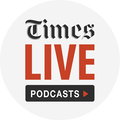
Cyril Ramaphosa defends ‘cheap’ IMF loan
Loading player...
President Cyril Ramaphosa on Thursday defended the government’s decision to approach the IMF for financial assistance, saying the loan has no stringent conditions attached to it and came cheap.
Responding to questions in the National Assembly, Ramaphosa said the loan from the lender of last resort will go a long way to boost the government’s response to the Covid-19 induced economic crisis. At an interest rate of 1%, the loan is cheap and does not come with any conditions that will threaten SA’s sovereignty.
In July the IMF approved SA’s first request for emergency aid, granting the country a $4.3bn (R72.5bn) loan towards mitigating the social and economic effects of the Covid-19 pandemic. The loan, at an interest rate of about 1%, will help the government finance its R500bn Covid-19 relief package.
The rapid financing instrument that SA agreed to does not have structural adjustment conditions. The commitments that the government has made are in line with policies outlined in finance minister Tito Mboweni’s supplementary budget in June. These include reining in the budget deficit and containing growth in debt as a percentage of GDP.
SA has also committed to implementing economic reforms contained in Mboweni’s proposals to reignite growth, which were released in 2019 and endorsed by the cabinet.
Ramaphosa warned on Thursday that government debt servicing costs will consume much of the savings accumulated in the economy if not urgently tackled.
Government debt is expected to reach close to R4-trillion in 2020/2021. This does not include the debt of state-owned companies, Ramaphosa said in his replies to questions from MPs. During the medium-term expenditure framework period, for example, debt service costs are expected to exceed total spending on health care, he said.
Measures to curb the spread of Covid-19, including the lockdown that came into force at the end of March, are set to lead to company closures and a jobs bloodbath. This will mean reduced tax collections, which will put the government’s finances under severe strain and force the state to borrow more.
SA’s debt as a percentage of GDP is already high. The emergency budget, which was necessitated by the health crisis, painted a bleak picture of SA’s fiscal trajectory and the. government expects to miss its tax target for 2020 by more than R300bn.
With declining tax revenues, the government’s debt levels are expected to soar to R4-trillion or 81.8% of GDP by the end ...
Responding to questions in the National Assembly, Ramaphosa said the loan from the lender of last resort will go a long way to boost the government’s response to the Covid-19 induced economic crisis. At an interest rate of 1%, the loan is cheap and does not come with any conditions that will threaten SA’s sovereignty.
In July the IMF approved SA’s first request for emergency aid, granting the country a $4.3bn (R72.5bn) loan towards mitigating the social and economic effects of the Covid-19 pandemic. The loan, at an interest rate of about 1%, will help the government finance its R500bn Covid-19 relief package.
The rapid financing instrument that SA agreed to does not have structural adjustment conditions. The commitments that the government has made are in line with policies outlined in finance minister Tito Mboweni’s supplementary budget in June. These include reining in the budget deficit and containing growth in debt as a percentage of GDP.
SA has also committed to implementing economic reforms contained in Mboweni’s proposals to reignite growth, which were released in 2019 and endorsed by the cabinet.
Ramaphosa warned on Thursday that government debt servicing costs will consume much of the savings accumulated in the economy if not urgently tackled.
Government debt is expected to reach close to R4-trillion in 2020/2021. This does not include the debt of state-owned companies, Ramaphosa said in his replies to questions from MPs. During the medium-term expenditure framework period, for example, debt service costs are expected to exceed total spending on health care, he said.
Measures to curb the spread of Covid-19, including the lockdown that came into force at the end of March, are set to lead to company closures and a jobs bloodbath. This will mean reduced tax collections, which will put the government’s finances under severe strain and force the state to borrow more.
SA’s debt as a percentage of GDP is already high. The emergency budget, which was necessitated by the health crisis, painted a bleak picture of SA’s fiscal trajectory and the. government expects to miss its tax target for 2020 by more than R300bn.
With declining tax revenues, the government’s debt levels are expected to soar to R4-trillion or 81.8% of GDP by the end ...

